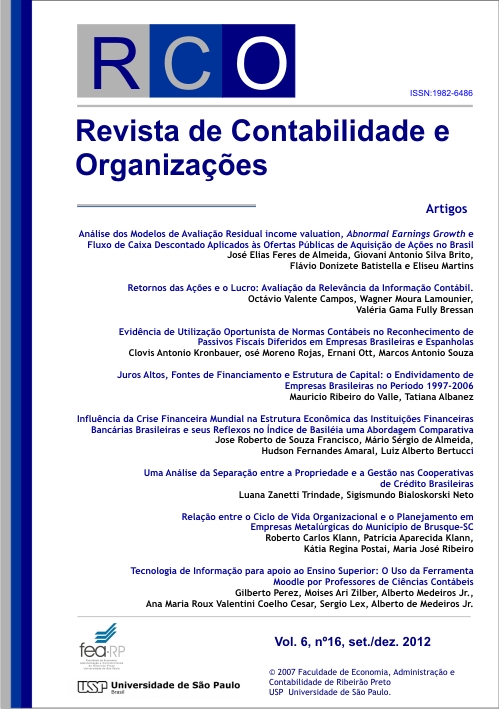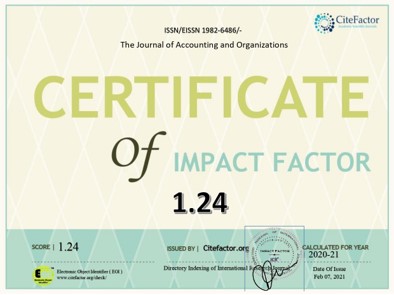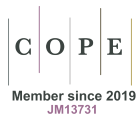Análise dos modelos de avaliação Residual Income Valuation, Abnormal Earnings Growth e Fluxo de Caixa descontado aplicados às ofertas públicas de aquisição de ações no Brasil
DOI:
https://doi.org/10.11606/rco.v6i16.52664Palavras-chave:
Avaliação de Empresas, Laudos de Ofertas Públicas de Ações, Residual Income Valuation (RIV), Abnormal Earnings Growth (AEG), Fluxo de Caixa Descontado (FCD)Resumo
Uma companhia aberta, quando realiza uma Oferta Pública de Aquisição de Ações (OPA), contrata um agente especializado para elaborar o laudo de avaliação em conformidade com as disposições normativas. Este artigo examina 97 laudos de avaliação de OPAs divulgados no Brasil no período de 2000 a 2007. O modelo de avaliação mais utilizado e disponibilizado nos laudos é o Fluxo de Caixa Descontado. O objetivo desta pesquisa é examinar se os valores das empresas estimados por meio de modelos com maior embasamento na contabilidade, o Residual Income Valuation (RIV) e o Abnormal Earnings Growth (AEG), se aproximam dos valores estimados pelo modelo de Fluxo de Caixa Descontado, conforme constam dos laudos de avaliação. Os modelos RIV e AEG foram aplicados em amostras com 21 e 39 firmas, respectivamente. Os resultados dos testes realizados na amostra indicam que não há diferenças estatisticamente significantes entre os valores estimados pelos modelos RIV e AEG em relação aos valores estimados pelo modelo de Fluxo de Caixa Descontado.Downloads
Publicado
Edição
Seção
Licença
A RCO adota a política de Acesso Livre (Libre Open Access), sob o acordo padrão Creative Commons (CC BY-NC-ND 4.0). O acordo prevê que:
- A submissão de texto autoriza sua publicação e implica compromisso de que o mesmo material não esteja sendo submetido a outro periódico. O original é considerado definitivo;
- Autores mantêm os direitos autorais e concedem à revista o direito de primeira publicação, com o trabalho simultaneamente licenciado sob a Licença Creative Commons Attributionque permite o compartilhamento do trabalho com reconhecimento da autoria e publicação inicial nesta revista;
- Autores têm autorização para assumir contratos adicionais separadamente, para distribuição não-exclusiva da versão do trabalho publicada nesta revista (ex.: publicar em repositório institucional ou como capítulo de livro), com necessário reconhecimento de autoria e publicação inicial nesta revista;
- Autores têm permissão e são estimulados a publicar e distribuir seu trabalho online (ex.: em repositórios institucionais ou na sua página pessoal) antes ou durante o processo editorial, já que isso pode gerar alterações produtivas, bem como aumentar o impacto e a citação do trabalho publicado (Veja O Efeito do Acesso Livre);
- A revista não paga direitos autorais aos autores dos textos publicados;
- O detentor dos direitos autorais da revista, exceto os já acordados no acordo de Libre Open Access (CC BY-NC-ND 4.0), é o Departamento de Contabilidade da Faculdade de Economia, Administração e Contabilidade de Ribeirão Preto da Universidade de São Paulo.
Não são cobradas taxas de submissão ou de publicação.
São aceitos até 4 autores por artigo. Casos excepcionais devidamente justificados poderão ser analisados pelo Comitê Executivo da RCO. São considerados casos excepcionais: projetos multi-institucionais; manuscritos resultantes da colaboração de grupos de pesquisa; ou que envolvam grandes equipes para coleta de evidências, construção de dados primários e experimentos comparados.
É recomendada a ordem de autoria por contribuição, de cada um dos indivíduos listados como autores, especialmente no desenho e planejamento do projeto de pesquisa, na obtenção ou análise e interpretação de dados e redação. Os autores devem declarar as efetivas contribuições de cada autor, preenchendo a carta ao editor, logo no início da submissão, responsabilizando-se pelas informações dadas.
É permitida a troca de autores durante todo o processo de avaliação e, antes da publicação do manuscrito. Os autores devem indicar a composição e ordem final de autoria no documento assinado por todos os envolvidos no aceite para publicação. Caso a composição e ordem de autoria seja diferente da informada anteriormente no sistema, todos autores anteriormente listados deverão se manifestar favoráveis.
No caso de identificação de autoria sem mérito ou contribuição (ghost, guest or gift authorship), a RCO segue o procedimento recomendado pela COPE.








